A Good Ceramic Knife for Beginners
The Revolution paring knife actually turned out to be a great introduction to ceramic knives, not just because of its good price (relative to their larger knives) but because it is incredibly well made, and eventually kind of fun to use.
I always held the view that ceramic knives were, on a fundamental level, kind of dumb. I thought it was neat that they don’t rust, but their notorious fragility just didn’t seem worth it. I’d heard people usually use them for the edge retention and because they don’t transfer a metallic taste into their food. Frankly, my taste buds just aren’t smart enough to track whatever steel knives are doing to my food and sharpening most knives isn’t that big a deal. But I figured if I’m going to make fun of other people for using ceramic knives, I better handle one myself first. It didn’t take much research before I came upon the Kyocera Revolution series. Turns out this thing is actually pretty sweet.
Specifications
| Blade Length: | 3″ |
| Knife Type: | Paring |
| Blade Material: | Ceramic |
| Handle Material: | Plastic |
Durability
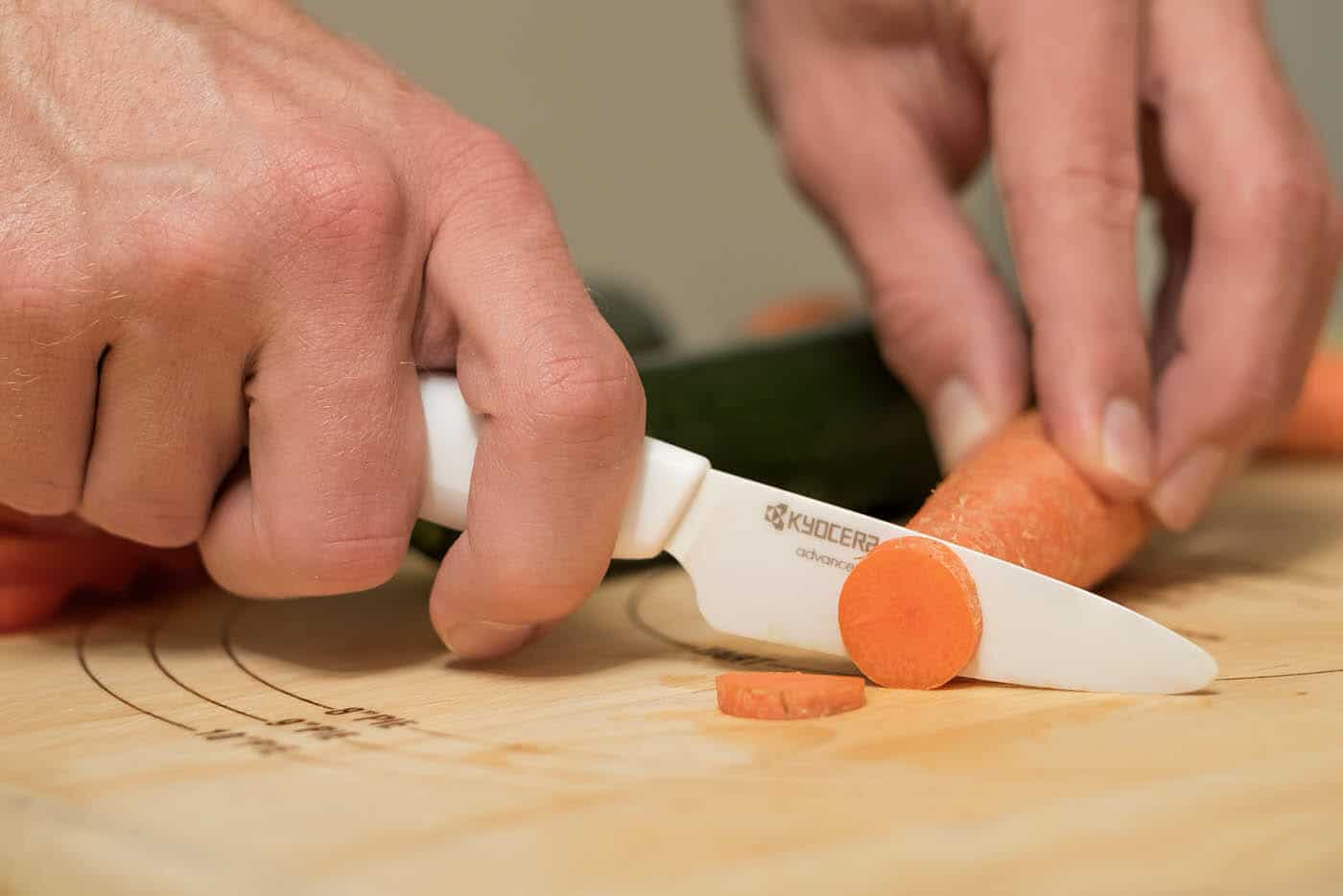
The fragility was my main concern, and it turns out to be an incredibly valid one. This knife feels like it’s waiting to crack every time I pick it up, but that’s not unusual. It takes a lot of getting used to because it weighs almost nothing, and every cut needs to be a light, straight slice. No prying with this thing, and definitely no pushing or forcing your way into an apple or round of cheese. In fact, don’t touch cheese at all with this knife (there are better knives for that). You have to know what you’re doing when you cut with a ceramic knife.
In that sense, this is actually a really good way to improve your slicing technique. I know I’ve started cutting things a little cleaner ever since playing with it. That constant feeling that if you apply pressure in any way that’s not a slice you risk chipping a piece of porcelain into your food will clean your movements up quick. In the realm of ceramic knives, though, you’re a lot less likely to damage a shorter blade than a longer blade, so there’s some comfort in starting with a paring knife. And I’ve become pretty comfortable with this Kyocera as I’ve learned to rely on its sharpness to do most of the work.
Sharpness
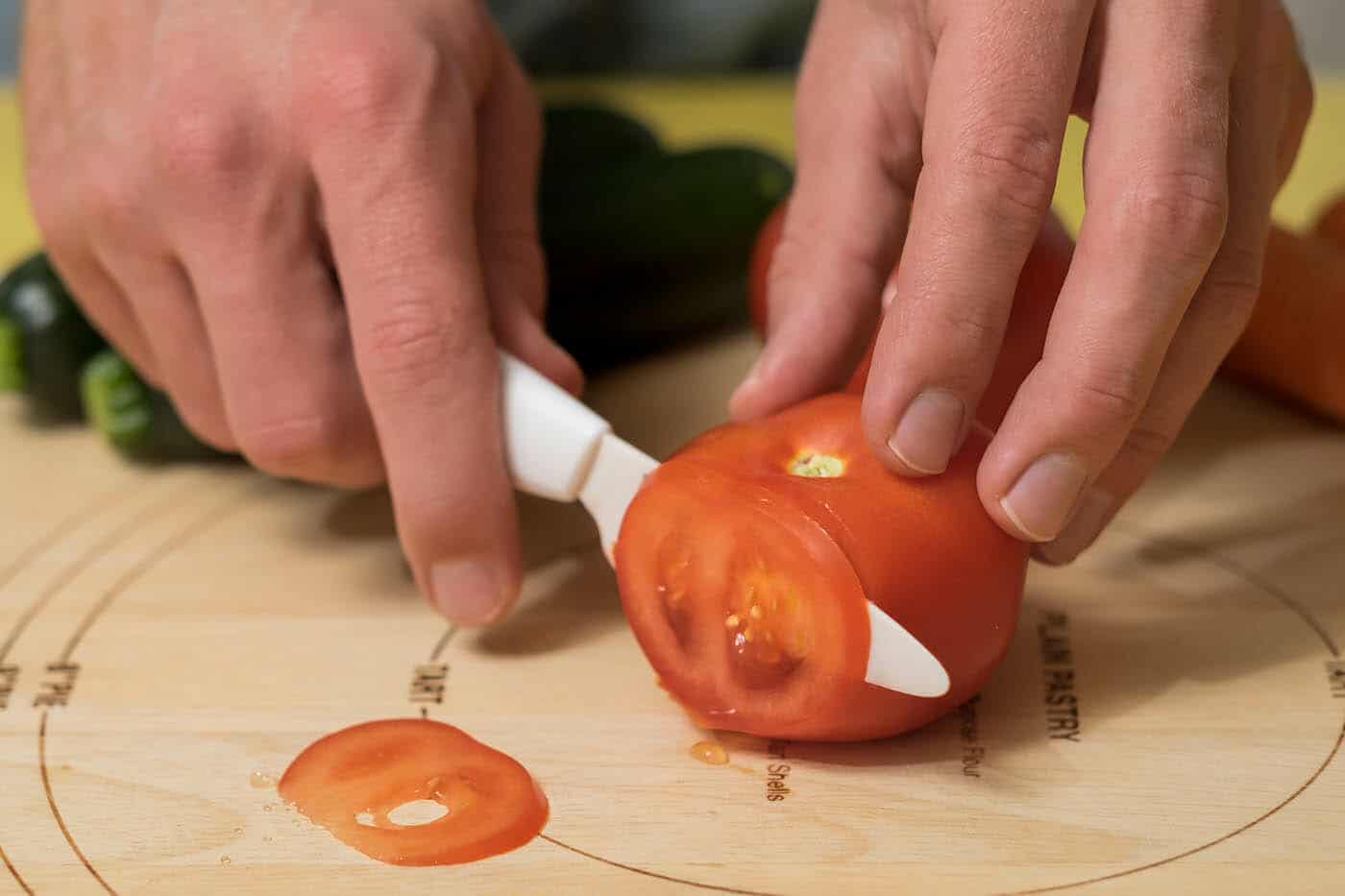
I ran this thing through the paper test really quick, and it did pretty well. Once I gave the paper a little slack the knife didn’t cut completely clean, but it did cut which is better than a lot of the knives in my house. Since this is a kitchen knife, though, the real test came with the food.
I started with lemons because I have tree in the back yard that drops a metric ton of them on the damn lawn everyday. It’s a little awkward cutting a fruit that large with a 3 inch knife, because of course the blade isn’t long enough to cut all the way through in one slice. I had to run it back and forth in a sort of gentle sawing motion because I was too afraid to just force the blade down like I do with a steel knife. Even with that awkward motion, though, this knife cut through smooth. A little too smooth, in fact. The first couple lemons I cut ended up with weird angles because the edge is so sensitive to the angle of your hand. If you don’t keep that motion going straight down, your lemon slices will end up looking like a child’s drawing. Once the cut was started it felt like there was almost no resistance at all, and more than once I’ve found a few seeds with a side shaved off. With a longer blade, like a chef knife, I could easily slice a lemon with one cut, and I could do it a lot faster than with the steel knife I normally use. I would cut that damn tree bare.
Tomatoes are a dream with this. It pretty quickly became a game for me to see how thin I could make the tomato slices. I got close to paper thin slices, but most didn’t come out even. Someone with a better trained hand than mine could probably cut them better. The point is, this knife had no problem with the tomato skin. These knives are meant for cutting up fruits and vegetables, and this Kyocera easily leads the pack in that regard.
Handling
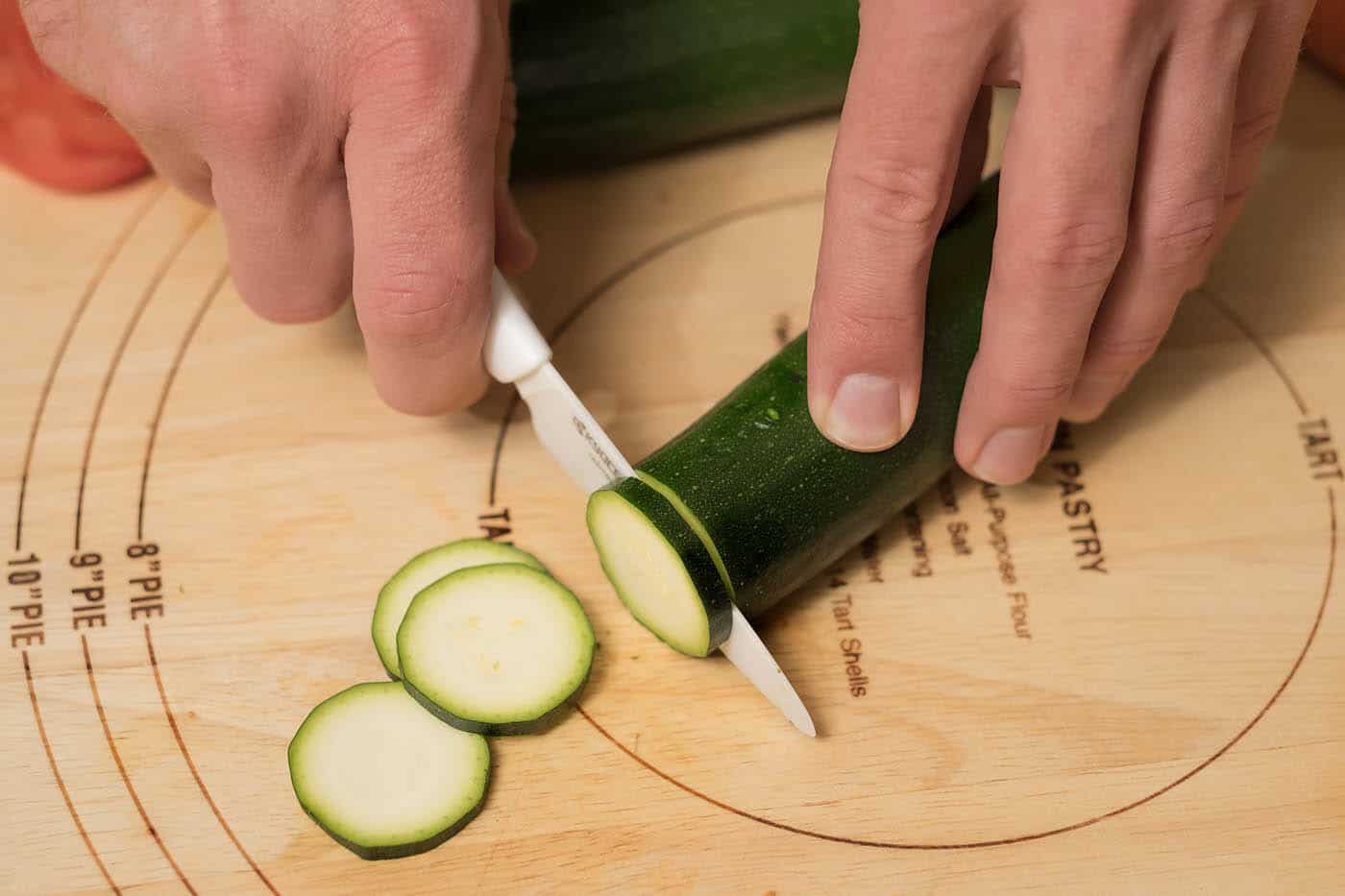
This is where sharpness becomes very important to the survival of a ceramic knife. A lot of the time when you have a sharp steel knife it will sink into something you’re trying to cut without effort because it’s so heavy. This paring knife is essentially weightless, so all the pressure has to come from you. For softer foods like tomatoes, all I had to do with this paring knife was put about the same pressure I would on a keyboard button (not a mechanical keyboard, though), and it started its cut. Once I got a sense for that pressure it was all smooth sailing. I thought the carrots would be trickier since they’re so much harder, but I didn’t apply much more pressure before the edge went in. So long as I kept it in a slicing motion, the knife had no problems.
It takes a little time to get used to the weightlessness, but this knife is made well enough that if you’re willing to spend five to ten minutes just cutting foods of different textures you’ll get the hang of it pretty quickly. And after a while that smoothness gets addicting.
Maintenance
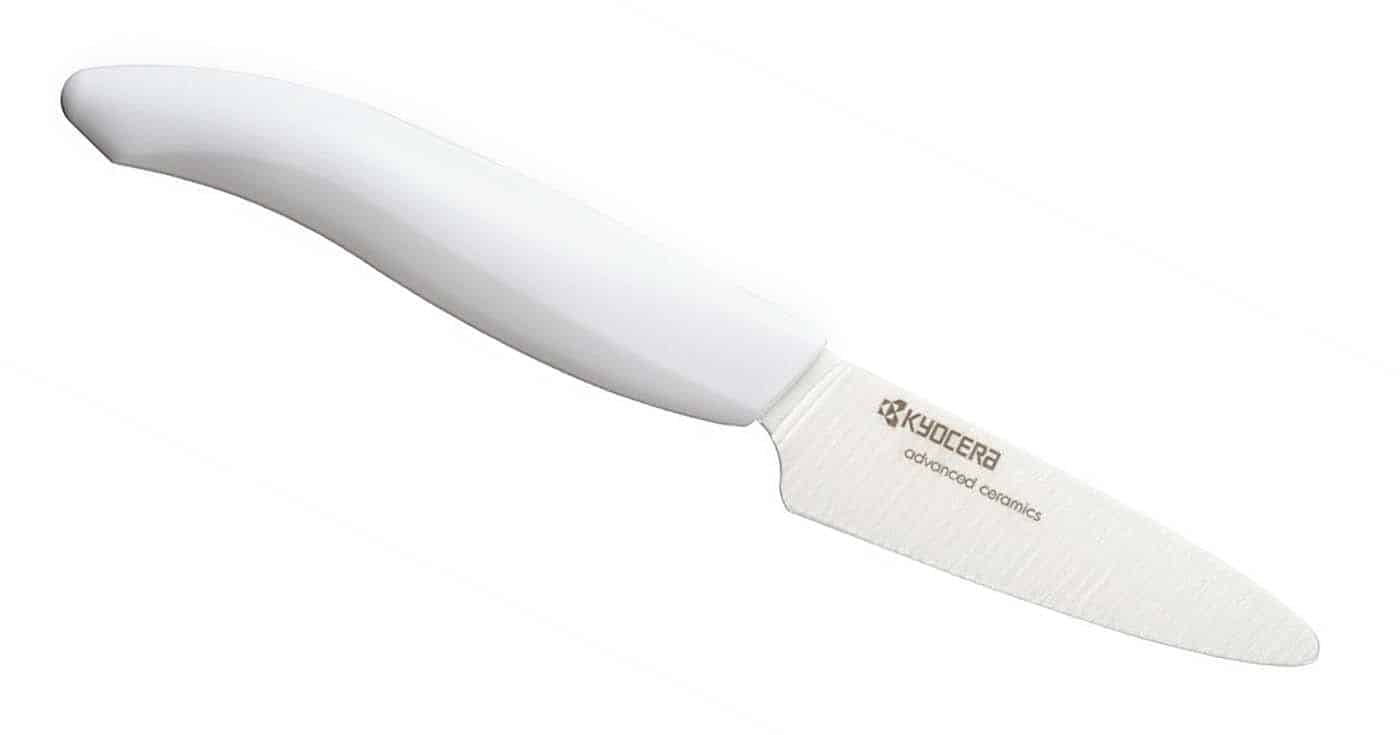
Because of that fragility, and also because it is a giant pain to sharpen these things, it’s really really important to get a ceramic knife that’s been made well. It needs to come sharp, and it needs to have good geometry, because if anything is flawed in the blade there is no easy DIY fix-it strategy at home. The cool thing about this knife, and about Kyocera as a company, is that it’s definitely a well-made knife, and Kyocera is more than happy to sharpen it for you if you’re willing to send it in. You shouldn’t need to sharpen it for a long time, but when you do, it will not be the kind of thing that’s fun to do on your own. It is an enormous relief to have a company do it for you. I have yet to notice a difference in the sharpness of this knife, though. It came dangerously sharp, and it has remained dangerously sharp for the two months of consistent use leading up to this review. [Year-long update: Yeah, still crazy sharp]
My main complaint about this particular knife is that it didn’t come with a cover for the edge. I don’t have a kitchen knife block in the traditional sense. Most of the kitchen knives in the house sit in drawers. That’s a very bad situation for ceramic knives, especially when they don’t have a blade cover or a knife sheath. I’ve rearranged a few things and it now has its own snug slot in a drawer, but I’m still a little uncomfortable about it sitting in there with a naked edge. I might get around to fashioning my own cover for it, but it seems a little low effort on Kyocera’s part not to include something so simple on a very fragile tool that is otherwise pretty inexpensive for them to make.
Is it worth it?
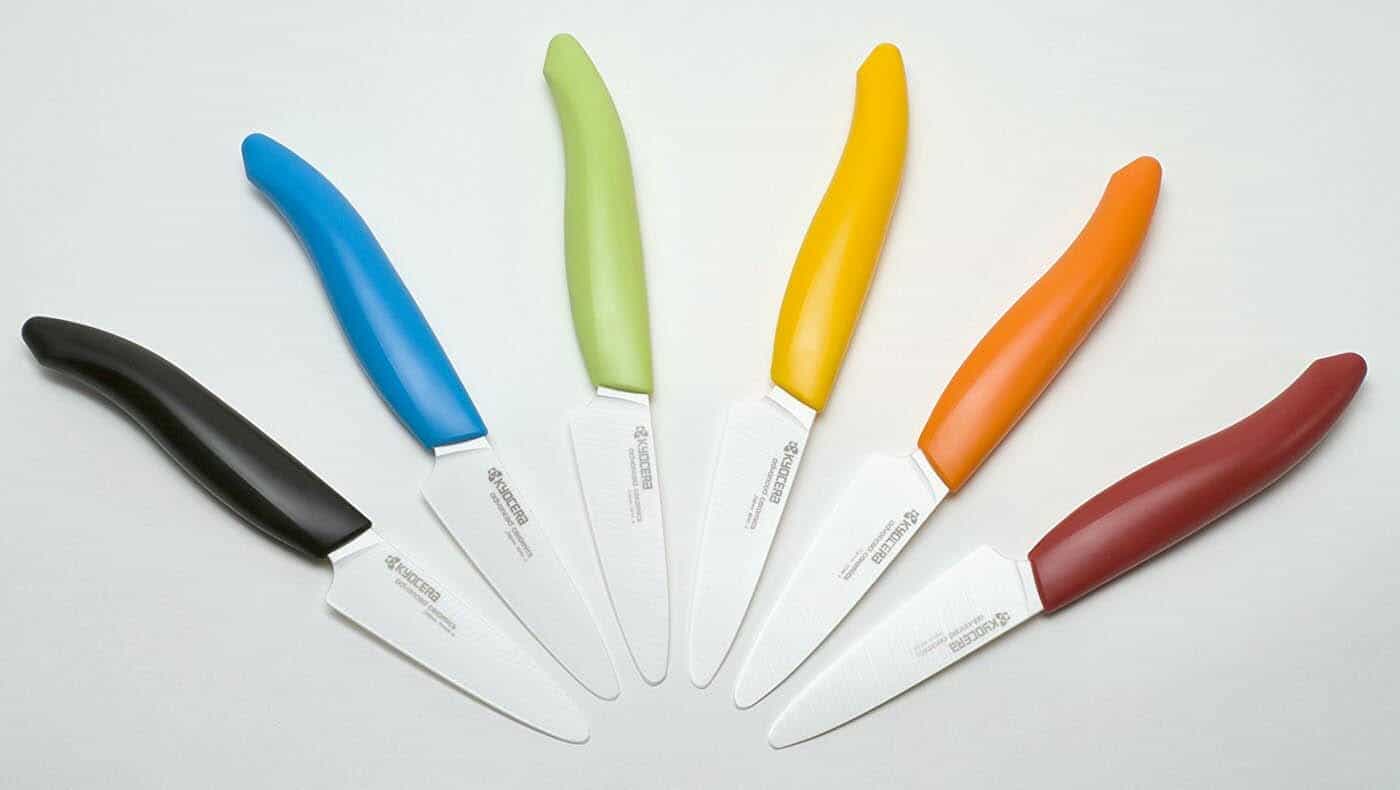
Here’s the thing. My taste buds have pretty much been burned off by hot coffee and liquor at this point, so I can’t honestly tell you if food tastes better after being cut by a Kyocera ceramic knife or by my pocket EDC with 154CM stainless steel. If I cared that much about tasting stuff or being healthy I wouldn’t have a bottle of scotch next to my bed. But it definitely makes cutting fruits and vegetables a hell of a lot easier. Once I got the motions with it down my scrambles and stir fries started looking a lot neater. The main thing that got in my way using this knife was the small size of the blade. That’s really an indication that I should probably just get a ceramic chef knife though.
If you’ve already made the grand life decision to start using ceramic knives, but never actually used one before, I would absolutely recommend starting with this knife. Kyocera is guaranteed good quality, and the short blade will be harder to damage than any other kind of knife. And if you do break it, you’re only out $15-20. In the grand scheme of things that’s a pretty cheap lesson.

I’ve had my paring knife for 10 years- banging around with other utensils & IT IS NOT FRAGILE ! JUst could stand to be sharpened.
Your paring knife has had a harrowing life, and I wish it all the best in its future endeavors.